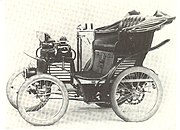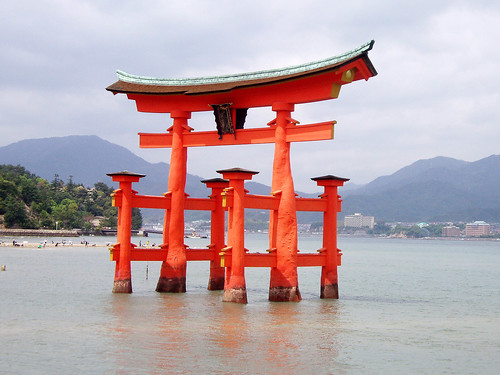
DES FRANCHISES SQUARE AND PORTE PRETORIANE SQUARE
Musical Animation
15h00 - 15h30: BANDA GAITES LLACIN (Des Franchises Square); KINTYRE SCHOOLS PIPE BAND (Porte Pretoriane Square)
CHANOUX SQUARE > REGIONAL LIBRARY
Musical parade towards the library
15h45 - 16h00: BANDA DE GAITES LLACIN - KINTYRE SCHOOLS PIPE BAND
CONFERENCE HALL REGIONAL LIBRARY
Lecture
16h15 - 17h00: “Aosta and its territory: meeting between indigenous cultures and Rome”
Dott.ssa STELLA BERTARIONE - Archaeologist of the Monuments and Fine Arts Department
PORTE PRETORIANE > REPUBLIC SQUARE
Parade with Music, Dances and Costumes by foot and riding horses
17h00 - 18h00: BANDA DE GAITES LLACIN - KINTYRE SCHOOLS PIPE BAND - DOMINIC GRAHAM SCHOOL IRISH DANCE - EVROPA ANTIQUA - CLAN DELLA GRANDE ORSA - GENS D’YS - GRUPPO STORICO ROMANO PONT-SAINT-MARTIN
ROMAN THEATRE
Concerts
21h00: VINCENZO ZITELLO
22h00: MABON (special guest GENS D’YS)
23h00: BARRAGE

FRIDAY 10 JULY 2009
CHAMONIX MONT-BLANC (F)
PACCARD STREET > BALMAT SQUARE > TRIANGLE DE L'AMITIÉ SQUARE
Parade with Music and Dances
16h30 - 17h15: KINTYRE SCHOOLS PIPE BAND - DOMINIC GRAHAM SCHOOL IRISH DANCE - BANDA DE GAITES LLACIN - GENS D’YS
PLACES Á MUSIQUE!
Music in the Squares
BANDA GAITES LLACIN
Chemin des Alpes Square -17h30
Quai d’Arve - 17h50
Balmat Square - 18h15
KINTYRE SCHOOLS PIPE BAND
Balmat Square - 17h30
Triangle de l’Amitié Square - 17h50
Quai d’Arve - 18h15
DOMINIC GRAHAM SCHOOL IRISH DANCE
Triangle de l’Amitié Square - 17h30
GENS D’YS
Chemin des Alpes Square - 17h50
TRIANGLE DE L'AMITIÉ SQUARE
Music, Celtic Dances and Concerts
21h00: BANDA GAITES LLACIN
21h30: GENS D’YS - SHOW
22h30: INIS FAIL
FRIDAY 10 JULY 2009
VAL VENY – MIAGE LAKE
09h30: PURTUD BRIDGE (PEUTEREY WOOD) Departure towards the Miage lake
11h00: MIAGE LAKE Ceremony for the fairies of Miage VINCENZO ZITELLO
COURMAYEUR
JARDIN DE L’ANGE
Concerts to show the musical groups
17h00: PHAMIE GOW
17h30: MABON
PEUTEREY WOOD
From 9h00: Market – Craft Stands
From 10h00: Workshops and Lectures (see specific page) - Info, timetable and registrations at Infopoint
SMALL STAGE
Open Stage – Concerts and Dances with Italian groups
18h00 - 18h45: RITA PARTINI
19h00 - 19h45: BRUNO LE ROUZIC
19h45 - 20h30: RICATTI ACUSTICI
MAIN STAGE
Concerts
20h30: PHAMIE GOW
21h30: LUSMOR
22h15: THE CHAIR
23h30: MABON
BONFIRE AREA
00h30: Lighting of Druidic Bonfire - CLAN DELLA GRANDE ORSA
PUB AREA
Concerts and Sessions
01.00: “Veilla Celtique”: PHAMIE GOW - THE CHAIR – MABON
SATURDAY 11 JULY 2009
PRÉ-SAINT-DIDIER - VITTORIO EMANUELE II SQUARE
Concert
16.30: PHAMIE GOW
COURMAYEUR
TOWN HALL
Departure “Gran Trail Valdigne” in cooperation with Asd Courmayeur Trailers
09h30: KINTYRE SCHOOLS PIPE BAND - BANDA GAITES LLACIN
ROMA STREET > BROCHEREL SQUARE > JARDIN DE L'ANGE
Music Parade
15h30: KINTYRE SCHOOLS PIPE BAND - DOMINIC GRAHAM SCHOOL IRISH DANCE - BANDA GAITES LLACIN
JARDIN DE L’ANGE
Concerts to show the musical groups
17h00: ADRIANO SANGINETO
17h30: DOMINIC GRAHAM SCHOOL IRISH DANCE
VAL VENY – PEUTEREY WOOD
From 9h00 Market – Craft Stands
From 10h00 Workshops and Lectures (see specific page)
Info, timetable and registrations at Infopoint
SMALL STAGE
Open Stage – Concerts and Dances with Italian groups
18h00 - 18h45: BEATRICE PIGNOLO
19h00 - 19h45: JIG RIG
19h45 - 20h30: RICATTI ACUSTICI
MAIN STAGE
Concerts and Shows
20h30: DOMINIC GRAHAM SCHOOL IRISH DANCE
21h00: KINTYRE SCHOOLS PIPE BAND - BANDA GAITES LLACIN
21h30: THE CHAIR
22h30: SESSION A9
23h30: BARRAGE
00h30: GREENLANDS – Anthem of Celtic Nations with all the musicians of Celtica
PUB AREA
Concerts and Sessions
01h00: “Veilla Celtique”: THE CHAIR – BARRAGE – SESSION A9
SUNDAY 12 JULY 2009
VAL VENY – PEUTEREY WOOD
From 9h00 Market – Craft Stands
From 10h00 Workshops and Lectures (see specific page)
Info, timetable and registrations at Infopoint
CLAN DELLA GRANDE ORSA CAMP
10h00: Celtic Waking up with dark bread and honey from the Aosta Valley
MAIN STAGE
Concerts and Shows
11h30: VINCENZO ZITELLO
12h30: KINTYRE SCHOOLS PIPE BAND
MENHIR AREA
14h00: Ceremony and Goodbye from Celtica 2009 - CLAN DELLA GRANDE ORSA & VINCENZO ZITELLO
SMALL STAGE
14h30: Final recital of the music courses
MAIN STAGE
Concert
15h00: MABON (special guest GENS D’YS)
BARD VILLAGE
BARD VILLAGE - MULTIPURPOSE ROOM TOWN HALL
15h00: Hydromel – Workshop to prepare Gods' nectar
MAURIZIO PUCCI
To attend this workshop you need to have: 1 bottle of 1 L with cork, 300 g honey - the kind you like more -, 2 lemons, a pinch of cinnamon and cloves, a small pot for water, 1 funnel; workshop to be paid by participants, compulsory registrations within 30 June 2009 via e-mail: info@...
BARD VILLAGE - CHURCH PARVIS
Musical Animation
16h00: BANDA GAITES LLACIN
15h30: ADRIANO SANGINETO
BARD VILLAGE - STENDHAL ROOM - TOWN HALL
Lecture
16.30: “Aosta and its territory: meeting between indigenous cultures and Rome”
STELLA BERTARIONE - Archaeologist of the Monuments and Fine Arts Department
BARD VILLAGE - CHURCH PARVIS
Animation – Irish Dances
17h00: KINTYRE SCHOOLS PIPE BAND
17h30: GENS D’YS
BARD FORTRESS – CARLO ALBERTO OPERA SQUARE
Concerts and Shows
20h30: DOMINIC GRAHAM SCHOOL IRISH DANCE
21h00: KINTYRE SCHOOLS PIPE BAND e BANDA GAITES LLACIN
21h15: SESSION A9
22h15: BARRAGE
Downhill with Music towards Bard Village
23h00: KINTYRE SCHOOLS PIPE BAND - BANDA GAITES LLACIN
Lectures, Workshops and Historical Reenactments
Workshops are free (except for different notice). Nevertheless, following the Celtic principle of 'honourable change', it will be nice - if you want to - to give directly an offer to the artists and craftsmen who have shared with us their art.
FROM FRIDAY 10 TO SUNDAY 12 JULY 2009
VAL VENY – Peuterey Wood – Information and registrations at InfoPoint starting from 10h00
Lectures – Druidic Talks nearby the Menhir
“Druids, the Goddess' guardians - The never-ending feminine in the Celtic world” - Silvano Danesi
“Morrigan and the chaos point - From Kalì Yuga to Change” - Silvano Danesi
“Ancient Myths, Treasure for the Soul” - Silvano Danesi
“Harp to heal: the therapeutic use of the Celtic harp from ancient Bards' stories till nowadays” - Rita Partini
“The Holy Flame of Brigit of Ireland: Saint or Goddess?” - Rita Partini
“Theories about the ancient healing: the healing praxis in Druidic art and its employment in the modern holistic therapeutic system” - Elena Fornari, Mari Corrau, Rita Pasdera
“Ogam and trees: the holy natural symbolism” - Federico Gasparotti
“Craftsman reveals himself: history, technique and creativity” - aCraftsmen of CELTICA
Workshops – Music and Dance
Celtic Dances - Gens d’Ys
Traditional Dances for adults and children - La Cerchia
Traditional Percussions (bones & spoons) - Guido Antoniotti
Workshops – Reenactments and Historical Demonstrations
Strength and Agility Games - La Cerchia
To learn to play the Horn - La Cerchia
Weaving with the planks method - Sagitta Barbarica
Approach to Historical Archery - Sagitta Barbarica (adults)
Metal Working - Sagitta Barbarica
Axe Throw - Sagitta Barbarica
The Cassock Net: from history to making - Luca Bertini
Light weaving: technique and equipment of the Celts - Labarum Bagauda Teuta Laevi
Natural Cosmetics: colours of beauty and of war by the Celts - Labarum Bagauda Teuta Laevi
Celtic Fight Strategies and Technique - Labarum Bagauda Teuta Laevi (adults)
Celtic Coins Exhibition – Frenz Vogel
Workshops for children (up to 12 years old)
Approach to Historical Archery - Sagitta Barbarica
Traditional Dances for children - La Cerchia
Games with the Sword for Celtic warriors - La Cerchia
The Enchanted Forest. Tales, Dances and Graphic – Pictorial Activities - Clan Damhmor
Dancing Fairies and Spirits. Expressive Workshop - Clan Damhmor
Training for throwing the spinning top - Moreno Bartolini
Face painting for children - Maurizia Merati
Night Parade looking for Dwarfs - Clan della Grande Orsa
Rides with Ponies and Horses – A.S.D. El Dorado – Jumping Team
http://www.celticavda.org/home/index/programma




















